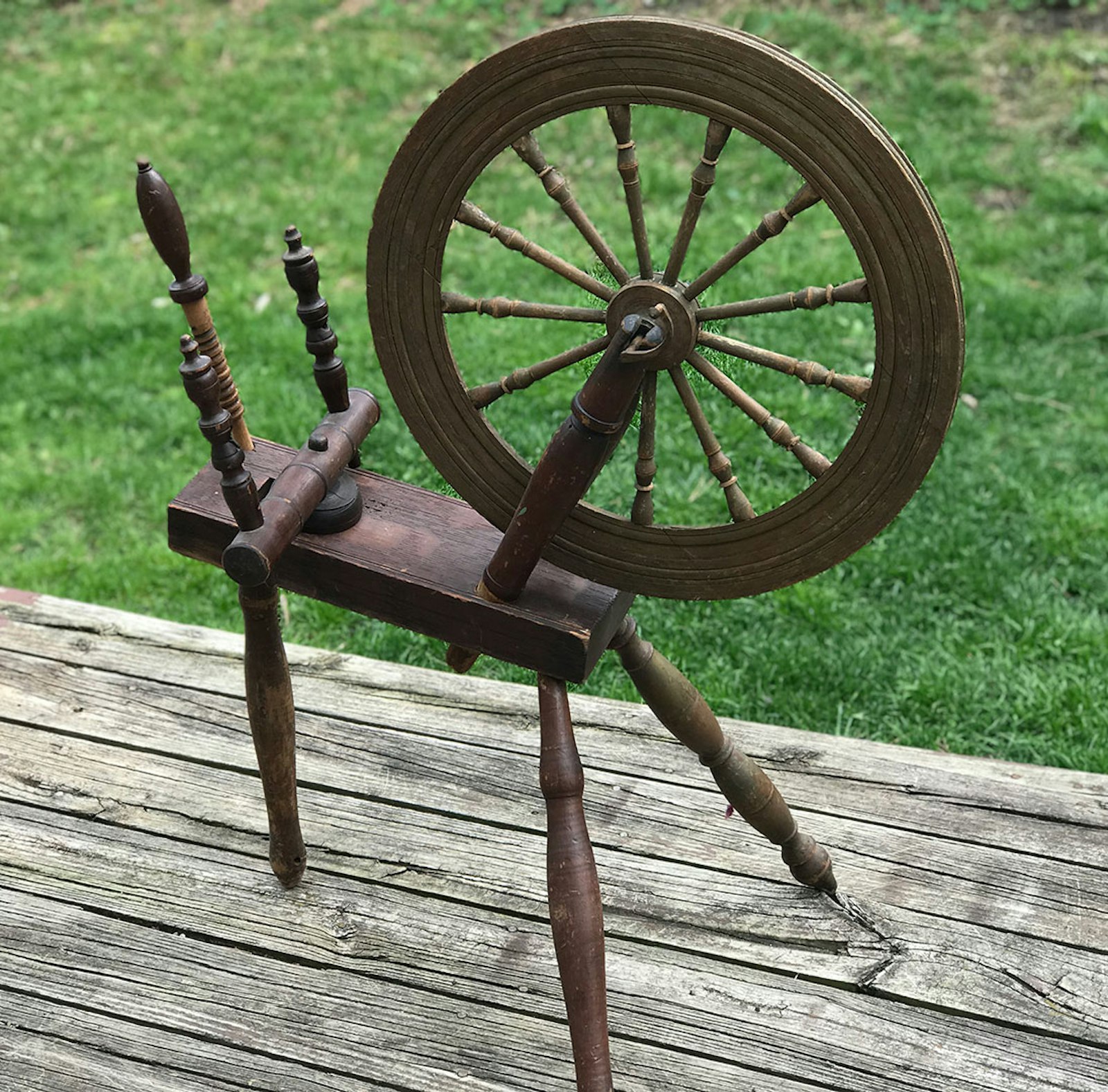Buying an older spinning wheel can be an exciting experience. Nevertheless, spinners, and soon-to-be spinners, are often faced with tons of unanswered questions before making the official leap. Is this wheel the right price? Are all of the parts present? Is this wheel fully functional or merely decoration? The bottom line is that before making such a purchase, potential buyers want reassurance that the wheel meets their needs.
So how does one develop an eye for spotting potential issues with older spinning wheels out in the wild? Here are some tips for becoming a spinning-wheel detective.
Educate Yourself
Become familiar with the parts of a spinning wheel and the different styles made over the years. Find diagrams of wheels using a quick Internet search or a handspinning reference book. With this information, you can spot elements that aren’t original and recognize when a wheel is missing components. Plus, you’ll have an occasional laugh at a poorly assembled wheel.
Take Your Time
Thoroughly look over the wheel to check for functional parts and proper alignment of the drive wheel and whorls. Spinning wheels will have either a spindle or flyer and bobbin for spinning. When you inspect a flyer assembly, make sure both the bobbin and flyer move freely and independently from one another. They should not be fused together unless the wheel is used for decoration only.
Note What Repairs Are Needed
Something is much better than nothing. If the flyer assembly, or spindle, is completely missing on an older wheel, the wheel is not considered in working order. Fiber cannot be spun on the wheel. As a rule of thumb, it is better to have a broken flyer than no flyer at all. A broken flyer arm can be repaired by a specialist. A missing footman can be remade with leather cording or other materials.

A spinning wheel missing its flyer assembly.
Check the Wood
Check the condition of the wood by searching for visible signs of woodworm infestations. A contaminated spinning wheel will have clusters of tiny holes where the beetles have gnawed through the wood from the inside out. Different types of beetles cause this type of damage to furniture, and spinning wheels are no exception.
Wheels to Avoid
Check for damage to the spinning wheel. Severe damage to the hub of the drive wheel can be a deal-breaker. Also, the tension screw, or knob, on a traditional-style spinning wheel is worth testing before purchasing. Take along spinning fiber, oil, and a spare drive band to test that the wheel works.

The flyers on vintage spinning wheels are not interchangeable. Make sure the wheel you are considering has the original parts.
Buying From a Distance
If inspecting the wheel in person is not an option, be prepared to ask a lot of questions. Here are some additional tips to make the experience easier.
Not so fast . . . Before you get excited about that pretty wheel based on its description, be aware that spinning-wheel listings can contain inaccurate information. Some sellers are not familiar with spinning wheels. Some will often use phrases such as “working condition” or “spinning wheel in great condition” for wheels that are missing essential parts. A true “working wheel” is ready for use (and most likely has a fresh drive band).
Don’t be afraid to ask for additional photos: clear, closeup pictures of all of the moving parts and, especially, the flyer assembly or spindle.
Ask questions about the overall condition of the spinning wheel and whether the seller has any background information.
Check for wear on the flyer in the photo. Handspun yarn on the flyer is an indication that the wheel was used in the past to spin yarn, not just as a decorative spinning wheel–shaped object.
I hope these tips help you with your next spinning wheel hunt.
For more information on sleuthing vintage spinning wheels, check out Heavenly Bresser’s article, “A Spinner’s Path: Maker’s Marks and Antique Accelerator Wheels,” in the Summer 2020 issue of Spin Off.
Heavenly Bresser is the owner of Heavenly Knitchet. She is an award-winning handspinner and teacher at major fiber events all over the United States. Aside from spinning and teaching, she can be found dyeing fibers and making jewelry. Her goal is to inspire, encourage, and uplift other fiber artists. Visit her online at www.heavenlyknitchet.com.
Originally published May 11, 2020; updated April 8, 2022.

